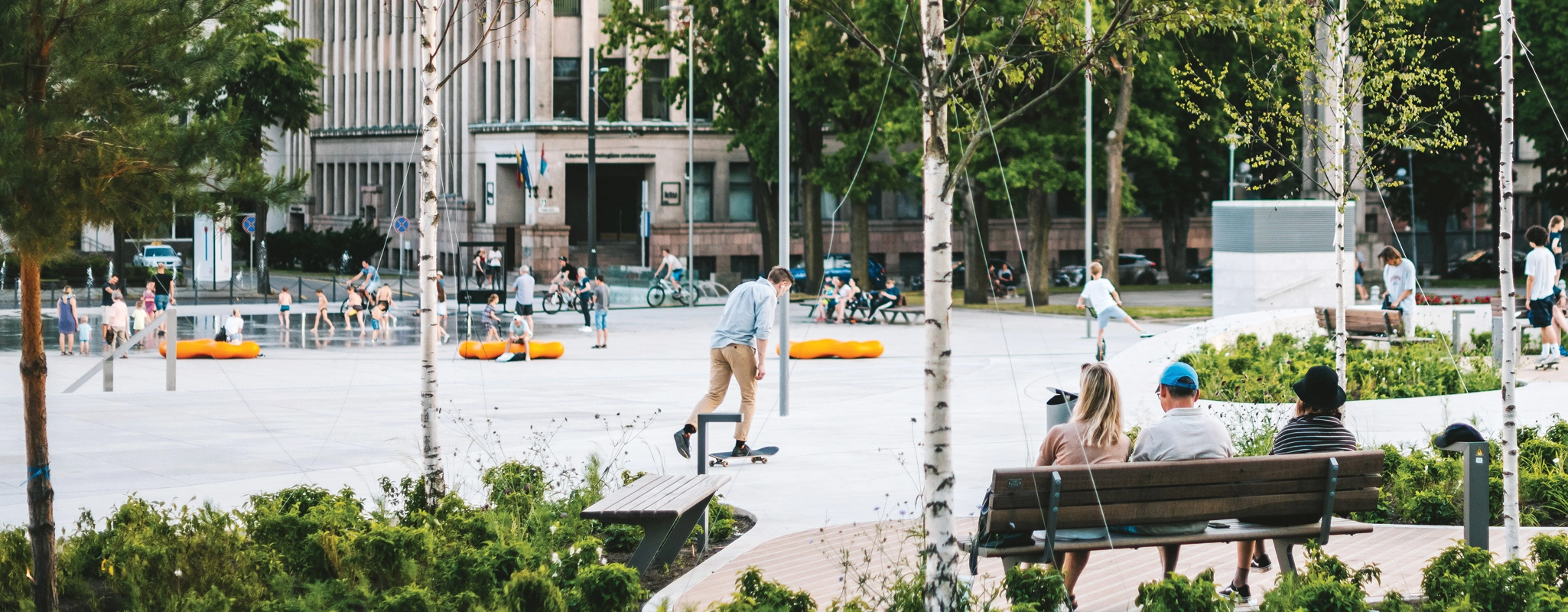- en

Reasons why living in a place with a high walkability rating is a good thing.
Modern cities can be a real headache. Common irritations include congested roads, streets lined with cars billowing fumes and the seeming impossibility of getting a loaf of bread without travelling half way across town.
Truth be told, what most of us need is a walkability makeover. What is walkability? As defined by Walk Score, it’s a score or grade given to a city by determining how many regular errands can be done by foot. The more you can do without the car, the better, the healthier, the happier you are. After all, the fact that in 2020, Europeans spent on average at least 5.5 days stuck in traffic (over the whole year, not at one time) can’t be doing a lot for them mentally or physically.
Want more reasons why living in a place with a high walkability rating is a good thing? Let’s start with the health benefits of putting one leg in front of the other. Regular walking cuts the risk of obesity, premature death, high cholesterol, and chronic illnesses like cancer, stroke, asthma, and type 2 diabetes. Not only that, it can cut the chance of developing depression by 71%, increase self-confidence, and boost the immune system. So, the more you are able to walk, the better.
Then there’s all the other benefits. Let’s start with the environmental ones. Where there is increased walkability, there is decreased need for cars. And this has a huge impact. Because in Europe, standard passenger vehicles account for a whopping 60.7% of road transport CO2 emissions. And the other benefit is that walkable districts, and on a larger scale, walkable cities, foster a greater sense of community as there is a far higher incidence of social interaction. This means they also stimulate the creation and growth of smaller economies of local shops and amenities. Simply put, they are just better.

Lithuania: A great location for your walkability transformation
Unlike many of the cities in the US, where the average Walk Score is 49, and traffic congestion is at a high due to many metropolitan areas having been designed around car transportation, the Lithuanian capital of Vilnius is greener, less urbanised, and very walkable.
In fact, 46% of the city is designated as green space, and in 2020 the city was recognised by the HUGSI index as the 3rd greenest city in Europe. This means that citizens are never far from green spaces like parks where they can walk, exercise and unwind.
Not only that, the city has a well-developed infrastructure, with most smaller districts enjoying easy access to shops, restaurants, and amenities. Meanwhile, newer districts of the city, like the attractive new urban area of Paupys, have been created with walkability in mind. Not only is there a network of shops, bakeries and restaurants nearby, the district has also been built within walking distance to the city centre, and with a large park close by. In fact, much of the city centre is walkable, with large areas pedestrianized, including the attractive riverside.
Meanwhile, the city has also dedicated resources to extending its network of bike paths, making it increasingly easier to travel from the outskirts to the downtown area by bike. This makes getting to work, especially in the summer months less of a commuting chore. Not only that, with many of the country’s largest and most exciting startups, like the vintage clothes online marketplace Vinted, and the cyber security giant Tesonet, building their own office complexes, talent is able to work, eat and even buy essentials, all within the same site.
But it’s not only Vilnius that can boast increased walkability. The second city Kaunas also offers much in the way of green spaces, and is equally rich in more pedestrianized spaces, especially in its centre. The same can be said of Lithuania’s only port city, Klaipėda. Here you’ll find that much in the way of funding has been invested in developing the city’s centre, especially its riverside area.

The future is walkable
So, what’s the final take? Walkability should be one of the defining factors to be on the lookout for when you are deciding where you want to live, and work. We all need to enjoy a better standard of living, where we are able to take time to walk, breathe fresh air and explore the streets and parks around us. Thankfully, this kind of slower living is possible in Lithuania’s cities.